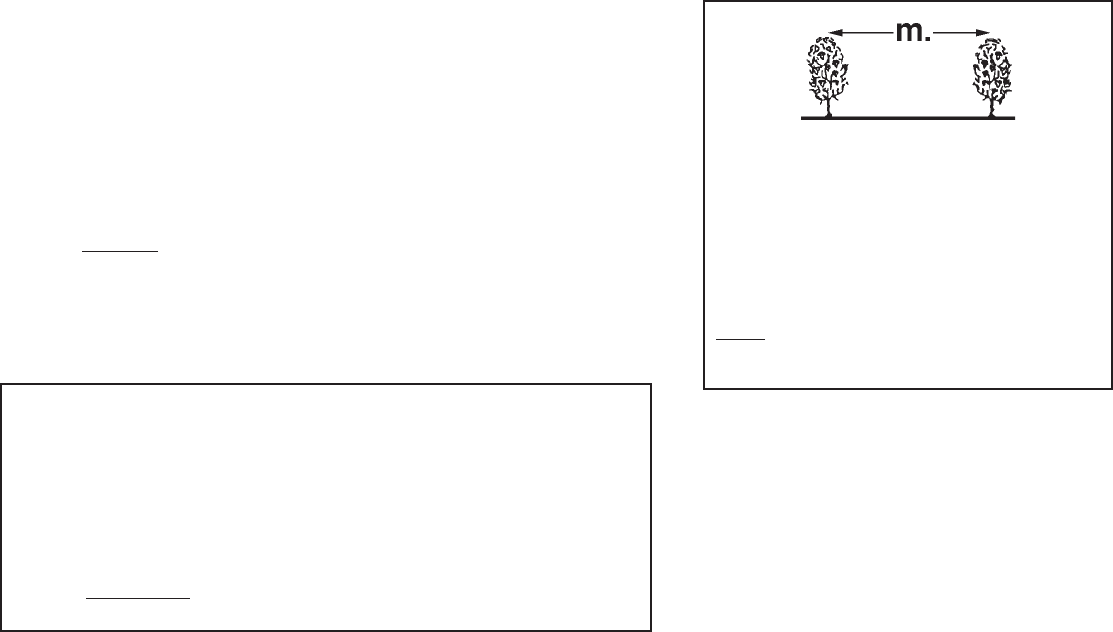
unigreen 21
6.3 CALIBRATING TURBO TEUTON
The tables on pages 26-31 let you easily calculate the distribution in litres/
hectare of the mistblowers with the standard fittings, proceeding as indicated
below:
a) Choose the table relevant to the blower group of the mistblower in question
(the main reference is the number of jets)
b) Find the distance between the rows of the vegetation and the diameter of
the nozzles used (ceramic plates, TR or TXA).
c) In the horizontal strip, choose the working speed and the distribution in
litres/hectare and on the vertical scale find the pressure to use.
d) Adjust the pressure to obtain the treatment required.
If the distance between the rows is different from that in the table you can
easily calculate the distribution in proportion: for example with a distance
between the rows of 8 m, divide the figure for the litres/hectare of the distance
between the 4 m rows by half, with a distance between the rows of 2.5 m
double the figure for the distance between the 5 m rows.
The last line of the table indicates the overall delivery of the fan.
If the mistblower is fitted with non-standard nozzles, the spraying tables of the
single nozzles per mistblower are on page 32.
To calculate the distribution in litres/hectare, use the following formula:
Vd = 600 x Q
I x V where: Vd = volume to distribute (L/ha)
Q = sum of the nozzles delivery (L/min)
I = distance between the rows (m)
V = tractor speed (Km/h)
EXAMPLE:
Distance between the rows: 5 m
Speed: 6 Km. / h
Working air pressure 30 bar
Fan Ø 800 with 14 standard, high volume nozzles (Ø 1.0)
Q total delivery of the nozzles (Tab. 1 page 34) 2.96x14= 41.44 L/min
Vd = 600 x 41.44 = 829 L/ha
5 x 6
N.B. : Depending on the season the vegetation may be more or less luxuriant;
bear this in mind before starting the treatment. If the plants don’t have much
foliage you should diminish the quantity of litres per hectare using lower
pressures or closing one or more jets of the fan.
N.B. to calculate the different ranges it is
sufficient to multiply the value lt/hectare by the
corresponding width indicated in the table and
divide it by the new width.
Example-
In the table: 907lt/ha with row distance 3m.
907x3 = 971 Lt/ha with row distance 2,8m
2,8


















